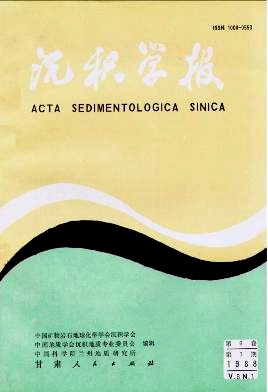FORMATION OF CEMENT OF CLASTIC ROCKS IN THE JIUXI BASIN
- Received Date: 1986-09-23
- Publish Date: 1988-03-10
Abstract: At present, cement of clastic rocks in interior basins has been considered an important factor affecting the accumulation of oil and gas. The author systemtically researches this problem by studying the Lower Cretaceous in the Jiuxi Basin. The results show that the cement, depending on its sedimentary environment, has two types of cementintergrowthing-combination namely rich in iron and poor in iron. In the sedimentary system of iron-rich alluvial fan, a lot of cement is formed around iron, such as ferruginous, calcareous and argillaceous mixed cement; ferrodolomite, gypsum, silica and ferruginous layer. But in the sedimentary system of iron-poor river or lake, a lot of cement is formed around carbonate, for example, argillaceous and calcite, argillaceous and ferruginous mixed cement, ankerite, dolomite, calcite, and ankerite layer. The horizontal distribution of cement is divided into three zones: mixed cement zone, ferromagnesian cement zone and diagenetic zone. Argillaceous and ferruginous cement in interior basins is formed during early diagenetic buried stage, and a series of changes of clay minerals in argillaceous cement occur with their buried depth, but the depth at which clay minerals such as kaolinite, montmorillonite, chlorite changeinto illite is different owing to the difference of geothermal gradient. The study that ferruginous, magnesian and calcareous carbonate form calcite, ferrocalcite, dolomite and ankerite cement minerals is a very interesting and worthwhile subject. So far, only a small quantity of the reports regarding this subject of interior basins have been published. However, it has been found that in the Jiuxi Basin there are lots of ankerites and dolomites, which are in the ferromagnesian cement and distribute widely. Most of them are automorphic crystals: a few of them are allotriomorphic crystals. The same result is got by staining in thin section, infra-ree absorption spectrum and X-ray diffraction analysis. In the Jiuxi Basin, there are lots of thin layers of ferruginous, magnesian and calcareous carbonate both in well and outcrop area. Usually, the carbonate thin layers are composed of one, two or three kinds of intergrowth minerals of the four kinds of minerals mentioned above and they have quite close origin relations. During early diagenetive buried stage, calcites formed earliest are replaced by Mg, Fe anions to form dolomite, ankerite and ferrocalcite minerals. During late diagenetic stage, mineral autogeny and recrystallization take place and result in the formation of allatriomorpjic ankerite and dolomite. If there are spaces, autogenetic dolomite rhombohedron can be formed within biological cavity; however, autogenic and bright ankerite crystals can be formed in pore space of sandstone. According to the studies of other people by electron microscope, there are some dissolution pores, intergranular pores and intercrystal pores within solomite. Dolomite rocks and dolomite crystal cement are very useful for the reservoir of oil and gas. It has been confirmed that dolomite rocks and ferromagnesian cementation zones in the Jiuxi Basin are of high yield oil-porducing zones.
| Citation: | Zhu Lianfang. FORMATION OF CEMENT OF CLASTIC ROCKS IN THE JIUXI BASIN[J]. Acta Sedimentologica Sinica, 1988, 6(1): 39-49. |






 DownLoad:
DownLoad: